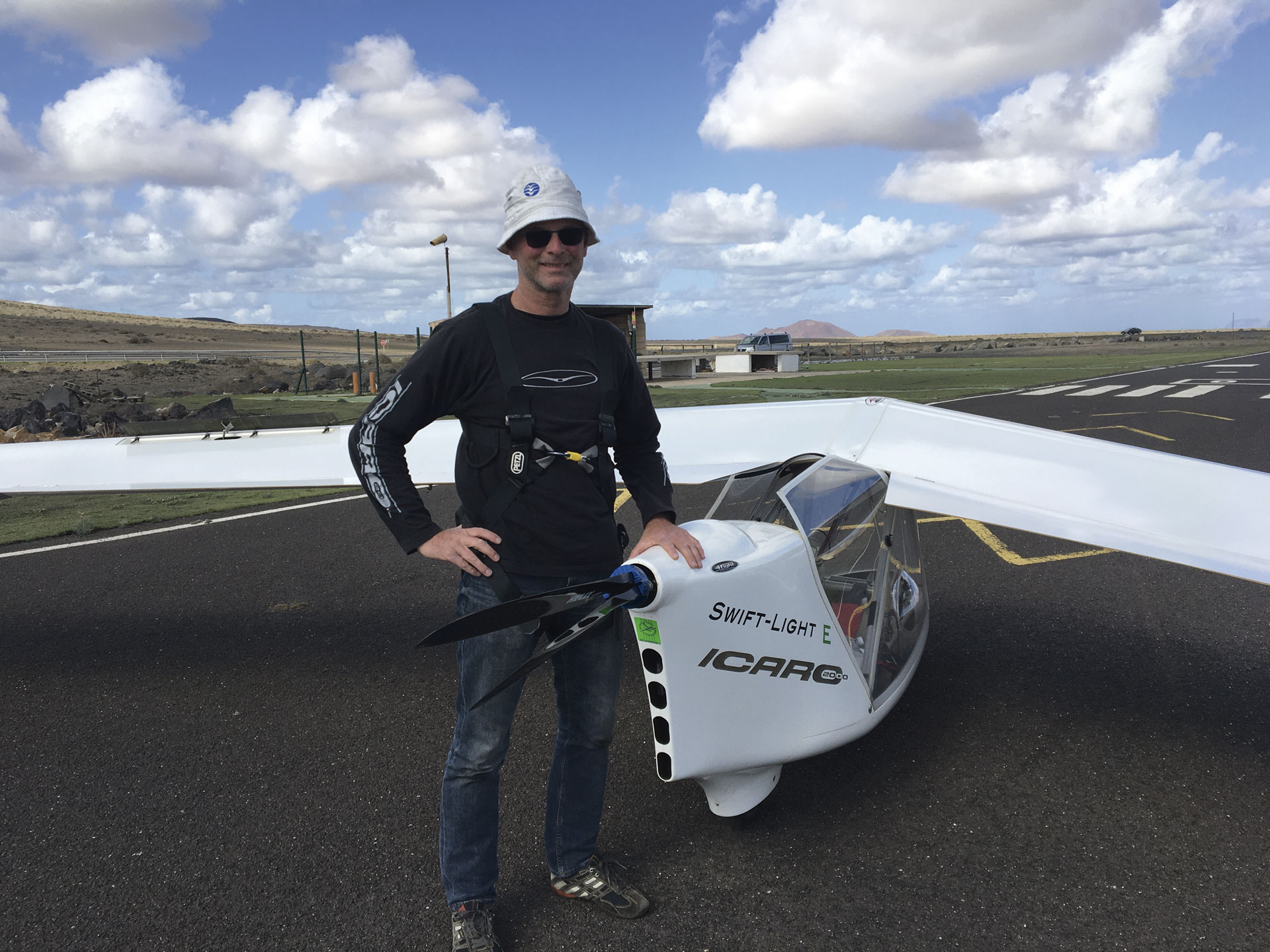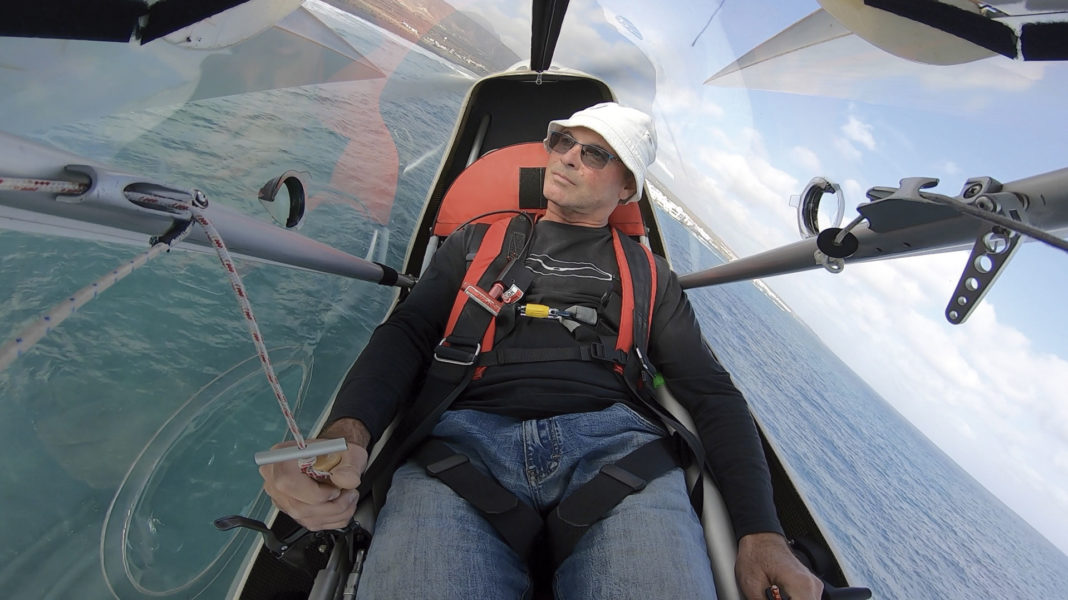Engineer and hang gliding world champion, Manfred Ruhmer, tested his electric ultralight prototype, Swift Light E in Lanzarote
Manfred Ruhmer, Austrian aeronautical engineer and twelve times World Air Sports champion in hang gliding and ultralight categories, chose Lanzarote to test his electric ultralight prototype, the Swift Light E.
He took off from the facilities at the Diablillos del Aire Aeromodeling Club, in the Agroindustrial Complex of Teguise and was able to stay in the air for four and a half hours non-stop in his first test flight.

Is your prototype a feasible starting point to build bigger aeroplanes?
Of course! I think it is possible to scale it up, although it would be very expensive. It’s also a question of efficiency and good design. Small electric-powered aircraft have the potential to be efficient, even for commercial flights. The only drawback is that despite the high efficiency of an electric motor, energy storage capacity is still low. In other words, if a litre of kerosene generates 10 kW of power, an equivalent 10 kW battery pack is rather bulky and heavy.
Do you think electric inter-island flights might be possible in the short or medium-term future?
Yes! And there are already companies working on small commercial ten-seater or twenty-seater aircraft with electric propulsion to cover short distances up to 500 km. There could be electric inter-island flights in the Canary Islands in ten years, perhaps.
Why did you choose Lanzarote for the first test flight of your electric ultralight?
I know the island quite well. I have flown here many times with the hang glider and the Swift is like a super hang glider with an electric motor. The island’s perfect! Even with strong wind and poor visibility, I could still fly thanks to my electric motor – it was a great flight, I really enjoyed it.
What distance do you think could be covered with this aircraft or a larger aircraft fitted with this technology?
It may be possible for a commercial airline to cover five hundred kilometres but it is very hard because, apart from design and efficiency, weight is a determining factor. And as I said, the battery, which stores electricity, is very unwieldy.
There are other possibilities, such as using hydrogen fuel cells, but producing hydrogen requires a lot of energy, so in that sense it would be less efficient, but it would cover longer distances. With battery-powered aircraft, however, you plug the energy straight into the aircraft and fly!
Photos: Courtesy of AlaDeltaLanzarote.com



